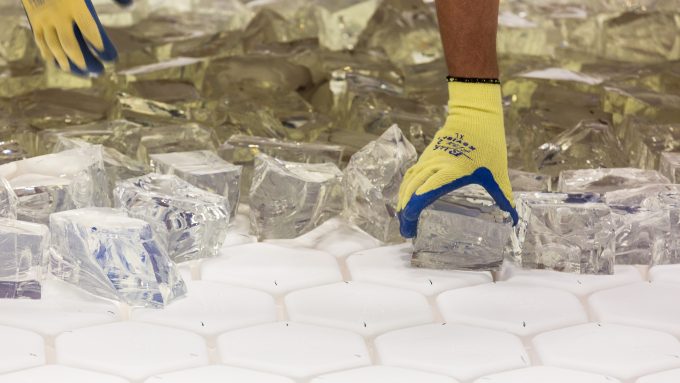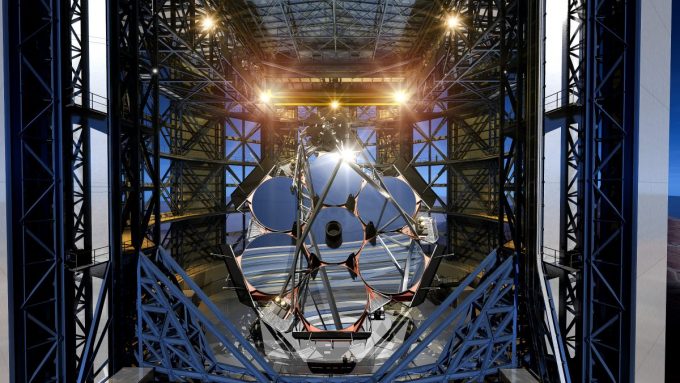The building of the Giant Magellan Telescope is an incredible engineering project, by any measure.
Expected to be the largest telescope in the world, the GMT has a unique design. A major part of the structure will be seven enormous primary mirrors 8.4 meters (27 ft.) in diameter, arranged in a flower-like pattern, with six off-axis segments surrounding one central segment. Altogether, these parts will form a single optical surface that is 24.5 meters (80 ft.) in diameter.
Building each 17-ton, $20 million primary mirror is a massively complex project in itself — an amazing example of human ingenuity. The work is ongoing, taking place at the Richard F. Caris Mirror Lab of the Steward Observatory of the University of Arizona.
Each of the seven mirrors requires 20 tons of a special optical glass — E6 borosilicate glass from the Ohara Corporation of Japan. The construction crew must painstakingly place the glass on a specially constructed ceramic mold. Then, the glass is melted and spun into shape. Shaping the mirror by spinning produces a natural parabolic shape and reduces the amount of grinding needed to arrive at the final form. Annealing (the process of cooling the glass to relieve internal stresses) takes about three months.

Blocks of Ohara low expansion E6 glass are carefully placed onto the mold for GMT mirror 5.
Both the back and the front of the mirror blank must be polished. But, of course, the front of the mirror is where the real work takes place — it must be polished to within a wavelength of light — that’s about one-millionth of an inch. The GMT estimates that it can take up to four years to finish a mirror, from start to finish, but the grinding and polishing of the first segment took more than six-and-a-half years. And after all of that work, the 17-ton mirrors hold only a few grams of aluminum to create the reflective surface — the coating of aluminum is just a few atoms thick.
According to the Giant Magellan Telescope website, “The GMT mirrors will collect more light than any telescope ever built and the resolution will be the best ever achieved.” The telescope will have a resolving power 10 times that of the Hubble Space Telescope.
Planned to be completed by 2025, it will scan the skies from the Las Campanas Observatory in Chile’s Atacama Desert. Images from the Giant Magellan Telescope, when combined with other powerful new telescopes, such as the James Webb Space Telescope, will provide us with more detailed images and information, and deeper glimpses into the origins of our universe, than ever before.
You can get more information about the telescope at the GMTO site.
The videos below will give you a look at the construction process.







